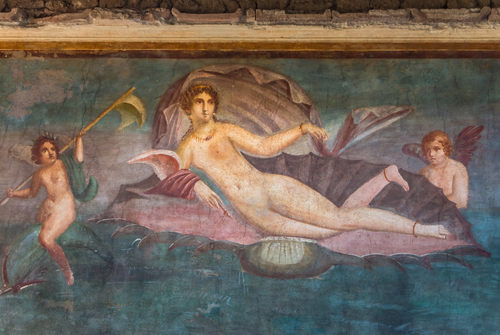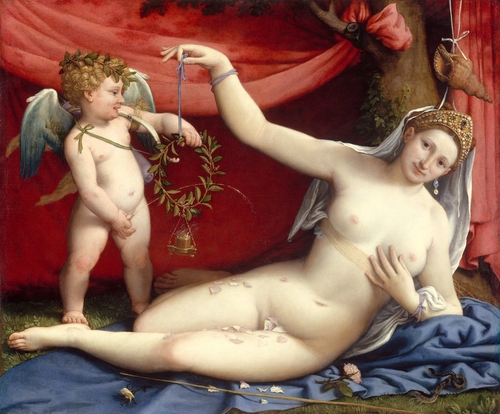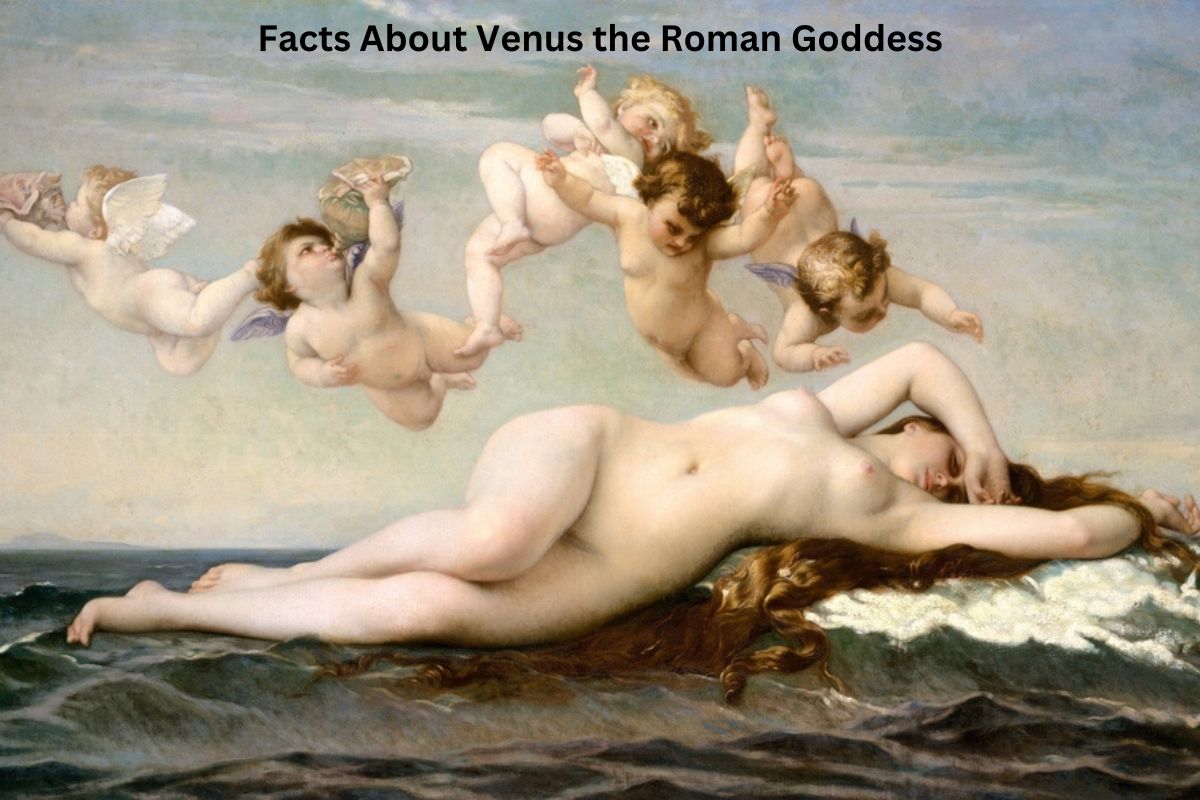Venus, the Roman goddess, is a figure of love, beauty, and fertility in ancient mythology. She emerged from the sea foam, captivating all with her extraordinary allure. The planet Venus is named after her due to its dazzling brightness in the night sky.
Known for her amorous escapades and romantic entanglements, Venus was married to Vulcan but had numerous lovers, including the god of war, Mars. She held a significant place among the twelve major gods and goddesses of the Roman pantheon and was widely revered throughout the Roman Empire.
Venus was often depicted as a captivating woman accompanied by symbols of love and purity. Her influence extended to festivals such as the Vinalia, associated with wine and abundance.
The myth of Venus and Adonis exemplifies her passionate nature and the transient nature of love. As a protector and provider of prosperity, Venus was deeply integrated into Roman culture and cherished by its people.
Venus Goddess Facts
1. Roman goddess of love, beauty, and fertility
Venus, the Roman goddess, held the domain over love, beauty, and fertility. She was associated with the concepts of desire, attraction, and sensuality. Venus was considered the embodiment of physical and romantic love, as well as the bringer of prosperity and good fortune.

2. Born from sea foam
According to Roman mythology, Venus was born from the sea foam that arose when the titan Cronus castrated his father Uranus and threw his genitals into the sea.
Also Read: Facts About Mars the Roman God
As the foam churned and settled, Venus emerged fully formed and remarkably beautiful. This birth story connects her to the sea and symbolizes her association with beauty and desire.
3. Married to Vulcan, but had many lovers
Venus was married to Vulcan, the god of fire and metalworking. However, their relationship was not one of deep love and fidelity.
Venus had numerous extramarital affairs and lovers, both divine and mortal. One of her most famous romantic liaisons was with Mars, the god of war, with whom she had several children.
Also Read: Jupiter God Facts
Despite her marital status, Venus was free-spirited and unapologetically pursued her desires, making her a complex and intriguing figure in Roman mythology.
4. The planet Venus is named after her
The planet Venus is named after the Roman goddess due to its striking appearance in the night sky. Venus is often referred to as the “Evening Star” or the “Morning Star” because it is one of the brightest objects in the sky during these times.
The planet’s radiant beauty and luminosity inspired astronomers to associate it with the goddess of love and beauty.
5. Often depicted as a beautiful woman with doves or cherubs
In artistic representations, Venus is typically portrayed as an alluring and seductive woman. She is often depicted in various forms, such as a nude figure or adorned with flowing robes, standing on a seashell or being accompanied by cherubs.
Doves, which are symbols of love and peace, are frequently depicted alongside her, further emphasizing her association with love and purity.

6. One of the twelve major gods and goddesses in Roman mythology
Venus held a prominent position among the twelve major gods and goddesses of the Roman pantheon. She was one of the most revered and widely worshiped deities in ancient Rome.
Temples dedicated to Venus were found throughout the Roman Empire, with notable ones including the Temple of Venus Genetrix in Rome and the Temple of Venus Victrix in Pompeii. Her cult attracted a large following, and her worship was deeply ingrained in Roman society.
7. Associated with the Greek goddess Aphrodite
Venus shares many attributes and characteristics with the Greek goddess Aphrodite. This connection is due to the influence of Greek mythology on Roman culture.
The Romans identified Venus as the counterpart of Aphrodite, and as a result, many aspects of Aphrodite’s mythology and worship were adopted by the Romans.
This syncretism between the Roman and Greek deities further solidified Venus’s status and popularity in Roman culture.
8. Celebrated during the Vinalia festival on April 23rd
The Vinalia festival was an annual celebration dedicated to Venus. It took place on April 23rd and was primarily associated with wine and fertility.
During the festival, Romans made offerings of wine to Venus, seeking her blessings for a successful grape harvest and an abundance of wine for the coming year.
The Vinalia was an important event for winegrowers and vineyard owners, who saw Venus as a patroness of viticulture and agriculture.
9. Famous myth: Venus and Adonis
One of the most well-known myths involving Venus is the story of Venus and Adonis. Adonis was a mortal youth who captured the goddess’s heart with his extraordinary beauty.
Venus and Adonis became lovers, but tragedy struck when Adonis was killed by a boar while hunting.
Distraught by his death, Venus turned his blood into a flower, the anemone, symbolizing love and the fleeting nature of life. This myth explores themes of passion, love, and the transience of beauty.
10. Revered and worshiped throughout the Roman Empire
Venus played a significant role in Roman culture and was revered as a protective deity. She was believed to have a direct influence on the prosperity and well-being of the Roman people.
As a goddess associated with love and fertility, she was invoked for blessings in matters of romantic relationships, marriage, and childbirth.
The worship of Venus extended beyond Rome and permeated the Roman Empire, reflecting the widespread popularity and influence of her cult throughout the ancient world.
